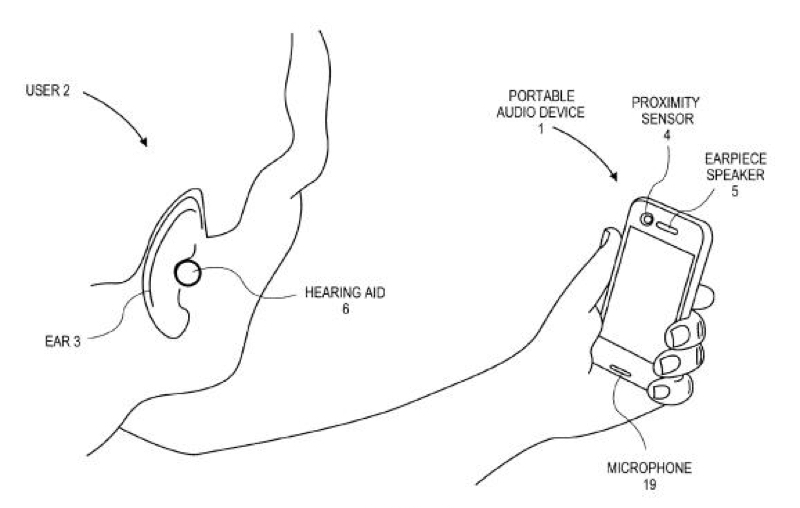By Greg Mills
Historically, we have seen articles about new Apple product lines launching as a sudden and unexpected turn of events. The company drops a disruptive technology bomb on an unprepared, well established, but uninspired industry. The truth is actually the quite the opposite. Apple is like a giant aircraft carrier: so big it turns very slowly and, in retrospect, we see a lot indications it is taking a certain unexpected course.

I submit that, for a while now, Apple has been preparing to enter the hearing aid industry. As with cell phones, music, apps, tablets and computers, there are a number of essential elements of any industry that have to be in place to get Apple to launch a new product line.
1. There has to be a large enough customer base to be interesting.
2. There has to be enough gross profit in a product line to be financially significant. Apple was close to getting into the flatscreen TV business a few years ago, but they never did. The shrewd reason they held back is because that industry was so competitive even then, there was just too low a profit margin to matter. There is now a glut of 4K flat screen TVs selling so cheaply that the profit margin is “underwater” in some cases. Could Apple have launched an amazing TV? Yes, but instead they created the Apple TV set-top box, which sells for $200 and likely has just as much net profit as a 55-inch 4K TV Set.
3. There has to be an interesting technical contribution to the new product line that differentiates it from the status quo. The novel contribution must be patented.
4. The new product needs have the synergy where Apple has the industrial infrastructure and experience already in place.
5. The market needs to be stable or, even better, growing larger with long term sustainability.
6. Government oversight of the product category needs to predicable and manageable.
7. There needs to be well known deficiencies in the product category and easily understood, Apple-owned improvements that consumers will understand almost instinctively.
8. It is also helpful if there is social charitable motivation that survives capitalistic realities.

I submit that AirPods are functionally not that different from hearing aids. Add a directional microphone and noise cancelation technology to AirPods and, with a few cosmetic modifications, disruptive hearing aids would be just about ready to market.
If we go back over the essential elements in the hearing aid industry to show there is critical mass enough to interest Apple, we can see:
1. There is a magnitude of 35 million Americans with hearing loss in one or both ears.
2. The hearing aid market in the U.S. was worth about $7 billion in 2017 and is expected to grow at 7% annually through 2025. The world market is likely three times the size of the U.S. market — and Apple is global.
3. Most people who need hearing aids can’t afford them and don’t have them.
4. With its AirPod and Beats products and patented noise canceling technology, Apple can convincingly manage the single biggest issue hearing aids currently fail to solve. Most older people with hearing issues can generally still hear sound, but most have trouble distinguishing a target sound or conversation that is mixed in with background noise. For example, I can generally hear and understand my wife, but if we are driving, the background noise of the car engine, air conditioning fan, radio, road or wind noise drown out a lot of what she is saying. Most modern hearing aids can amplify sound but suck at directional selection and noise cancelation.
5. Apple has the synergy to convincingly create hearing aids that directionally detects — in the direction you are facing — what you need to hear and will amplify speech from that direction while canceling ambient room noise coming from other directions.
6. AirPods can be converted in a similar form factor to become hearing aids. Add directional microphones and noise cancelation circuitry to the them, or a connected iPhone, and you have an interesting product. I have a number of Costco brand Kirkland Signature 6 hearing aids that are several years old and that are “Made for iOS” compatible. This means I can connect them to an iPhone or iPad to listen to music or even stream iPhone calls in stereo to my ears complete with amplification suitable for my hearing loss. The higher frequencies need bumping for me, which is very common.
7. Getting a non-invasive product like a hearing aid approved is relatively easy when you can show that your product has already been allowed by the FDA using the notion of device equivalency. Nothing in an Apple brand hearing aid is likely to be hard to introduce.
8. An Apple brand hearing aid that manages noise cancelation and directional sound selection better would be a slam dunk product.
9. Finally the clincher: current hearing aid products are sold only by licensed audiologists. Imagine an app that allows you to do your own hearing test and automatically adjust you own “HearPods.” You can already do most of that with the BlueTooth Costco hearing aids.
10. Actually there is one more thing: the lousy current products currently being sold are way too expensive. Hearing aids currently cost $1,500 to $2,000 each and get lost or broken a lot. Imagine Apple selling HearPods for $200 to $500 a pair! Apple can sell HearPods retail for what state-of-the-art hearing aids currently sell for wholesale, and Apple will still make money hand over fist!
